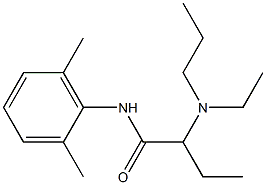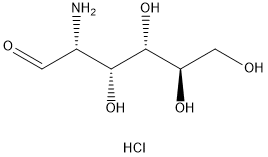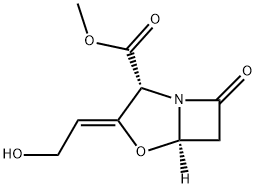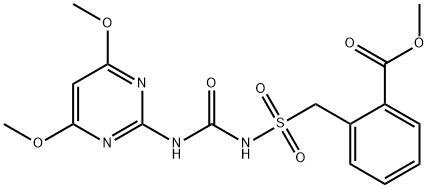Articaine hydrochloride
Synonym(s):4-Methyl-3-[[1-oxo-2-(propylamino)propyl]amino]-2-thiophenecarboxylic acid methyl ester hydrochloride;Articaine hydrochloride;Carticaine chlorhydrate;Carticaine hydrochloride
- CAS NO.:23964-57-0
- Empirical Formula: C13H20N2O3S.ClH
- Molecular Weight: 320.839
- MDL number: MFCD00190157
- EINECS: 245-957-7
- SAFETY DATA SHEET (SDS)
- Update Date: 2025-12-11 08:41:34

What is Articaine hydrochloride?
Description
Articaine hydrochloride is a thiophene-containing local anesthetic pharmacologically similar to mepivacaine. Most local anesthetics act by abolishing voltage-gated sodium channel currents indiscriminately in all populations of neurons. Articaine is an amide local anesthetic most commonly used in dentistry. It possesses a unique ester side chain that is metabolized rapidly by circulating esterases. Articaine is reported to modify cardiac action potentials and ion currents only at concentrations higher than the therapeutic range needed to inhibit voltage-gated sodium channels.
Chemical properties
White or almost white, crystalline powder.
Originator
Ultracain,Hoechst,W. Germany,1976
The Uses of Articaine hydrochloride
Articaine hydrochloride is the hydrochloride Salt of Articaine, a amide based short-acting local anesthetic use for regional anaesthesia in day-case settings such arthroscopy, hand , food surgery and in dentistry.
What are the applications of Application
Articaine HCl is a potentially useful biochemical
Manufacturing Process
3-α-Chloropropionylamino-2-carbomethoxy-4-methylthiophene (prepared from 3-amino-2-carbomethoxy-4-methylthiophene and chloropropionyl chloride) was dissolved in toluene and n-propylamine added. The whole mixture was heated to boiling for 6 to 7 hours. After cooling, the propylamine hydrochloride that had formed was removed by washing with water, The toluene phase was dried with sodium sulfate, and then the solvent and excess propylamine were removed by distillation. The oily residue was taken up in ether. The hydrochloride of 3-n-propylamino-α-propionylamino-2- carbomethoxy-4-methylthiophene was obtained by introducing hydrogen chloride gas or by means of methanolic hydrogen chloride. The base boils at 162°C to 167°C under 0.3 mm of mercury pressure and the hydrochloride melts at 177°C to 178°C.
brand name
Septanest (Cilag-Chemie, Switzerland); Septocaine (Cilag-Chemie, Switzerland); Ultracaine (Hoechst AG, Germany).
Therapeutic Function
Local anesthetic
Contact allergens
This local amide-type anesthetic is seldom reported as allergenic even in patients sensitized to other amidetype molecules like lidocaine, prilocaine, mepivacaine, or bupivacaine.
Biochem/physiol Actions
Articaine hydrochloride helps to alleviate pain and blocks transmission of the pain signal. Articaine is an amide local anesthetic widely used in dentistry. Articaine acts by inhibition of nerve impulse conduction by blockade of sodium channels.
Metabolism
Articaine is the only amide local anesthetic containing a thiophene aromatic ring rather than benzene. Because articaine hydrochloride is the only widely used amide local anesthetic that also contains an ester group, biotransformation of articaine hydrochloride occurs in both plasma (hydrolysis by plasma esterase—similarly to other ester local anesthetics) and liver (hepatic microsomal enzymes—similarly to other amide local anesthetics). The metabolism of articaine hydrochloride is initiated by hydrolysis of the carboxylic acid ester groups to obtain free carboxylic acid. Its primary metabolite, articainic acid, is pharmacologically inactive, undergoing additional biotransformation to form articainic acid glucuronide. Additional metabolites have been detected in animal studies. From this point, the reaction can follow several pathways: cleavage of carboxylic acid, formation of an acid amino group by internal cyclization, and oxidation.
Mode of action
Articaine Hydrochloride is the hydrochloride salt form of articaine, an amide-type local anesthetic. Its mechanism of action involves reversible blockage of nerve impulse conduction through binding to specific sodium ion channels on the membrane, thereby interfering with the electrical excitation in the nerve, slowing the propagation of the nerve impulse and reducing the rate of action potential rise. This results in a loss of sensation at the site of injection. Articaine hydrochloride is used for relief of pain in minor operations, usually in combination with the vasoconstrictor epinephrine.
Properties of Articaine hydrochloride
| Melting point: | 177-178° |
| storage temp. | Keep in dark place,Inert atmosphere,2-8°C |
| solubility | H2O: soluble20mg/mL, clear |
| form | powder |
| color | white to beige |
| Stability: | Hygroscopic |
Safety information for Articaine hydrochloride
| Signal word | Warning |
| Pictogram(s) |
 Exclamation Mark Irritant GHS07 |
| GHS Hazard Statements |
H315:Skin corrosion/irritation H319:Serious eye damage/eye irritation H335:Specific target organ toxicity, single exposure;Respiratory tract irritation |
| Precautionary Statement Codes |
P305+P351+P338:IF IN EYES: Rinse cautiously with water for several minutes. Remove contact lenses, if present and easy to do. Continuerinsing. |
Computed Descriptors for Articaine hydrochloride
| InChIKey | GDWDBGSWGNEMGJ-UHFFFAOYSA-N |
Articaine hydrochloride manufacturer
New Products
4,4-Difluoropiperidine hydrochloride tert-butyl 9-methoxy-3-azaspiro[5.5]undecane-3-carboxylate Indole Methyl Resin N-Isopropylurea N,N-Dicyclohexylcarbodiimide(DCC) MELDRUMS ACID 5-METHYLISOXAZOLE-4-CARBOXYLIC ACID Magnessium Bis glycinate Zinc ascorbate 1-bromo-2-butyne 2-acetamidophenol 9(10H)-anthracenone Erythrosin B, 4-Piperidinopiperidine 2-((4-morpholinophenylamino) (methylthio) methylene) malononitrile 2,4-dihydroxybenzaldehyde 3-(4-morpholinophenylamino)-5-amino-1H-pyrazole-4-carbonitrile Methyl 2-methylquinoline-6-carboxylate 2,6-dichloro-4-nitropyridine 4-Bromo-2-chlorobenzonitrile 2-(benzylamino)acetic acid hydrochloride 4-(tert-Butoxycarbonylamino)but- 2-ynoic acid 3,4-dihydro-2H-benzo[b][1,4]dioxepine 1-Phenyl-1-cycloprppanecarboxylicacidRelated products of tetrahydrofuran








You may like
-
 23964-57-0 99%View Details
23964-57-0 99%View Details
23964-57-0 -
 Articaine hydrochloride 98%View Details
Articaine hydrochloride 98%View Details
23964-57-0 -
 Articaine hydrochloride 23964-57-0 98%View Details
Articaine hydrochloride 23964-57-0 98%View Details
23964-57-0 -
 23964-57-0 Articaine hydrochloride 99%View Details
23964-57-0 Articaine hydrochloride 99%View Details
23964-57-0 -
 Articaine HCl 98.00% CAS 23964-57-0View Details
Articaine HCl 98.00% CAS 23964-57-0View Details
23964-57-0 -
 Articaine HCl 95% CAS 23964-57-0View Details
Articaine HCl 95% CAS 23964-57-0View Details
23964-57-0 -
![Methyl 4-methyl-3-[(n-propylalanyl)amino]thiophene-2-carboxylate hydrochloride 95% CAS 23964-57-0](https://img.chemicalbook.in//Content/image/CP5.jpg) Methyl 4-methyl-3-[(n-propylalanyl)amino]thiophene-2-carboxylate hydrochloride 95% CAS 23964-57-0View Details
Methyl 4-methyl-3-[(n-propylalanyl)amino]thiophene-2-carboxylate hydrochloride 95% CAS 23964-57-0View Details
23964-57-0 -
 Articaine hydrochloride CAS 23964-57-0View Details
Articaine hydrochloride CAS 23964-57-0View Details
23964-57-0
